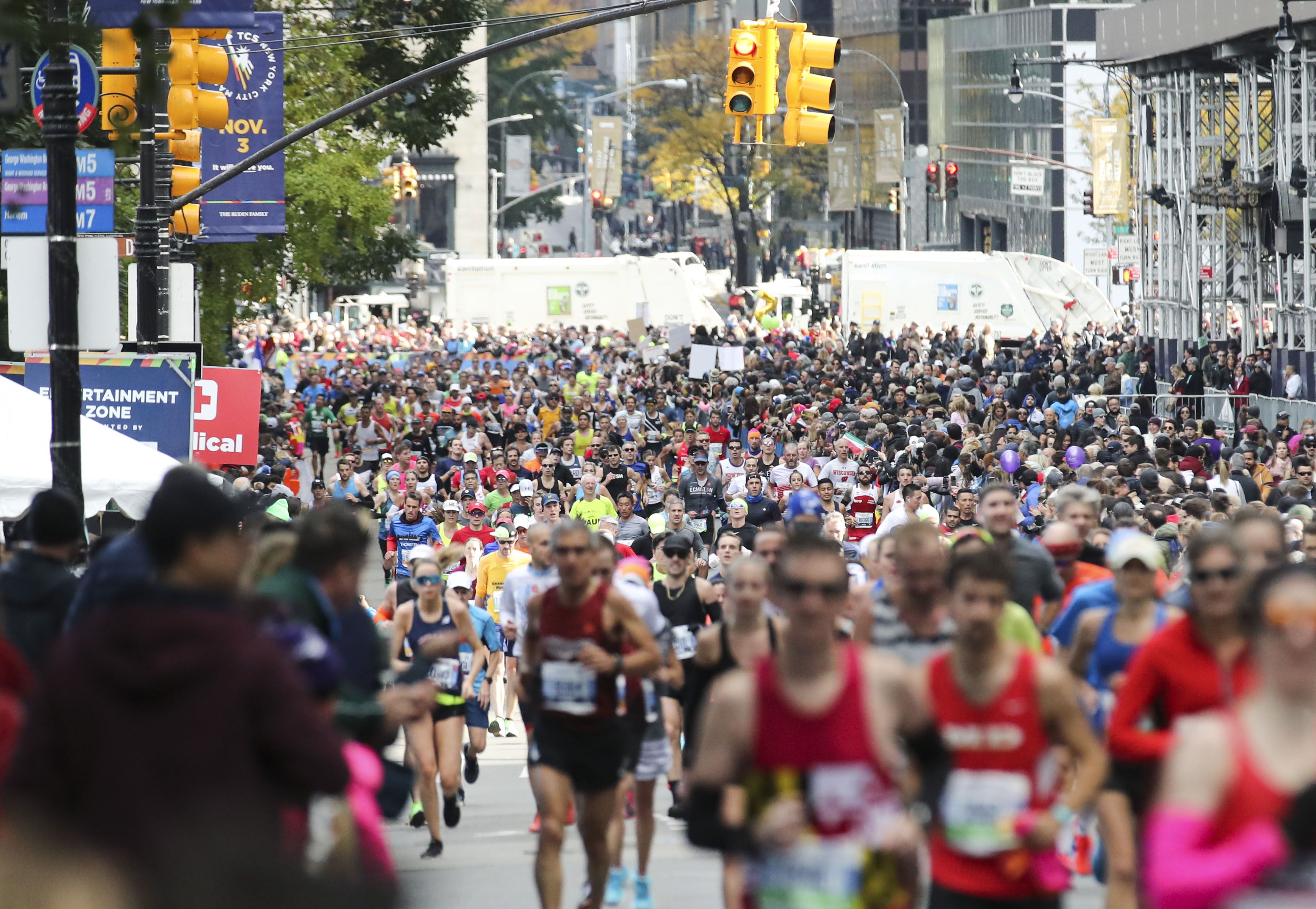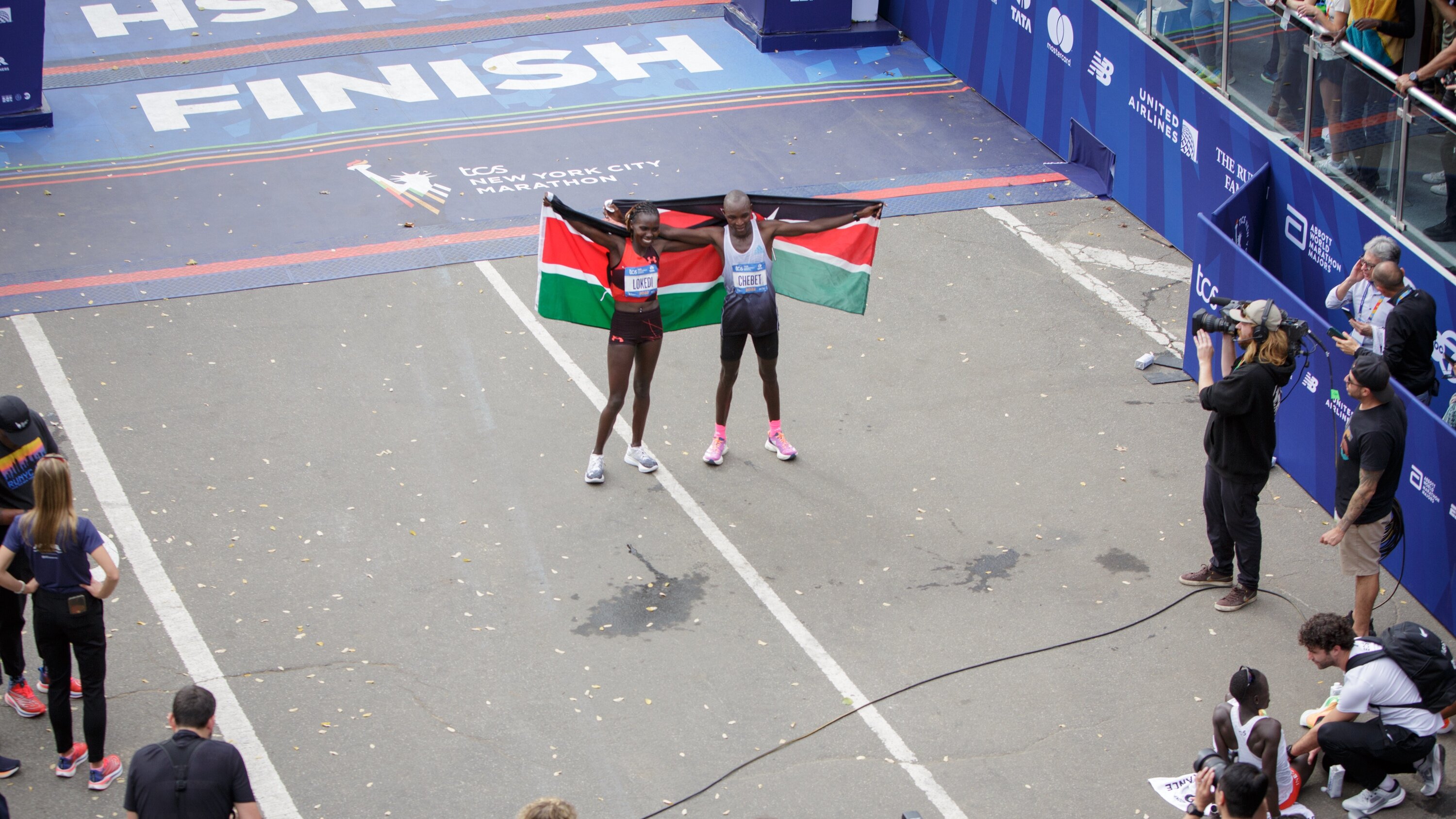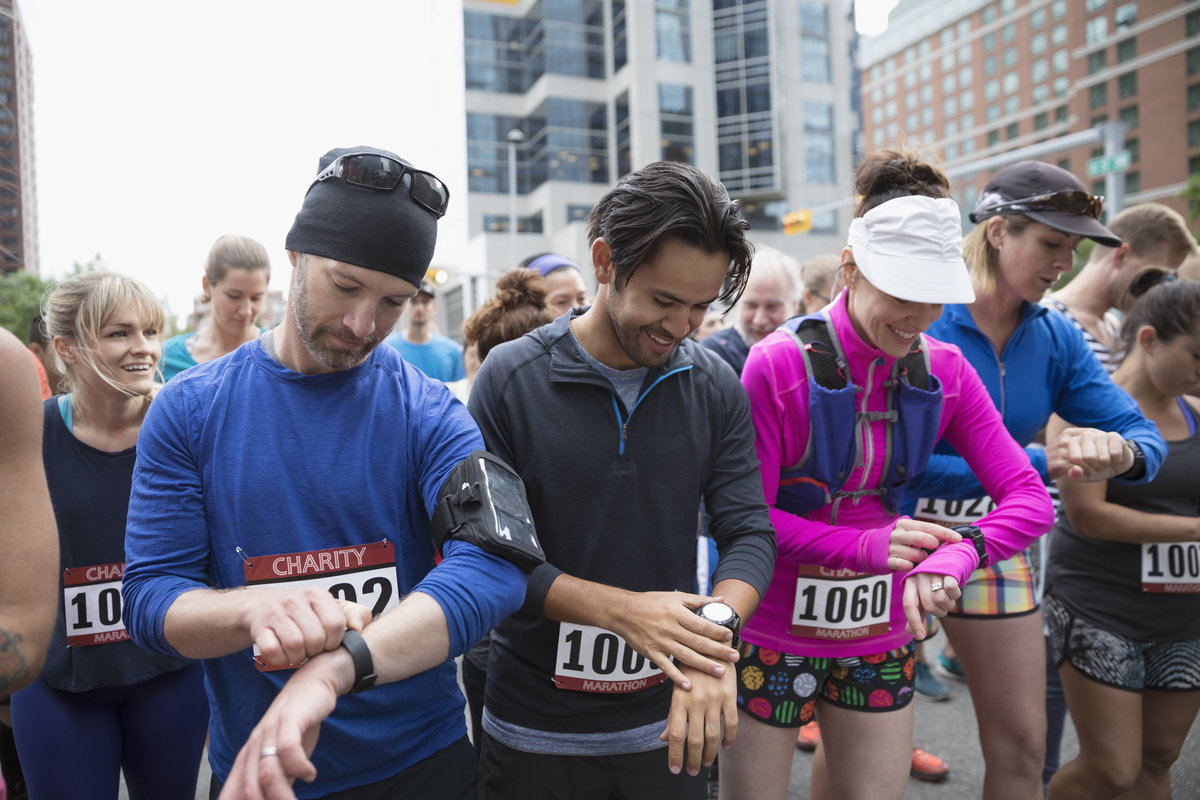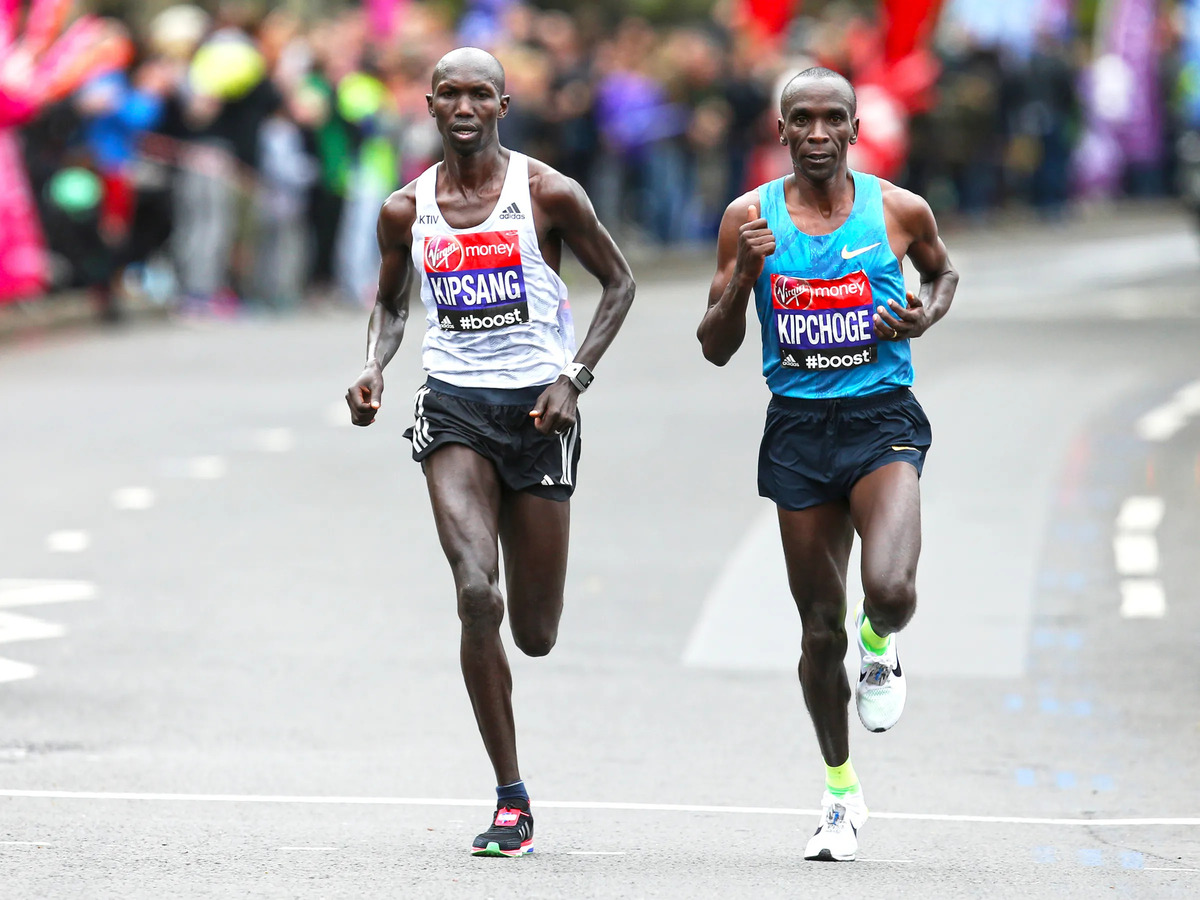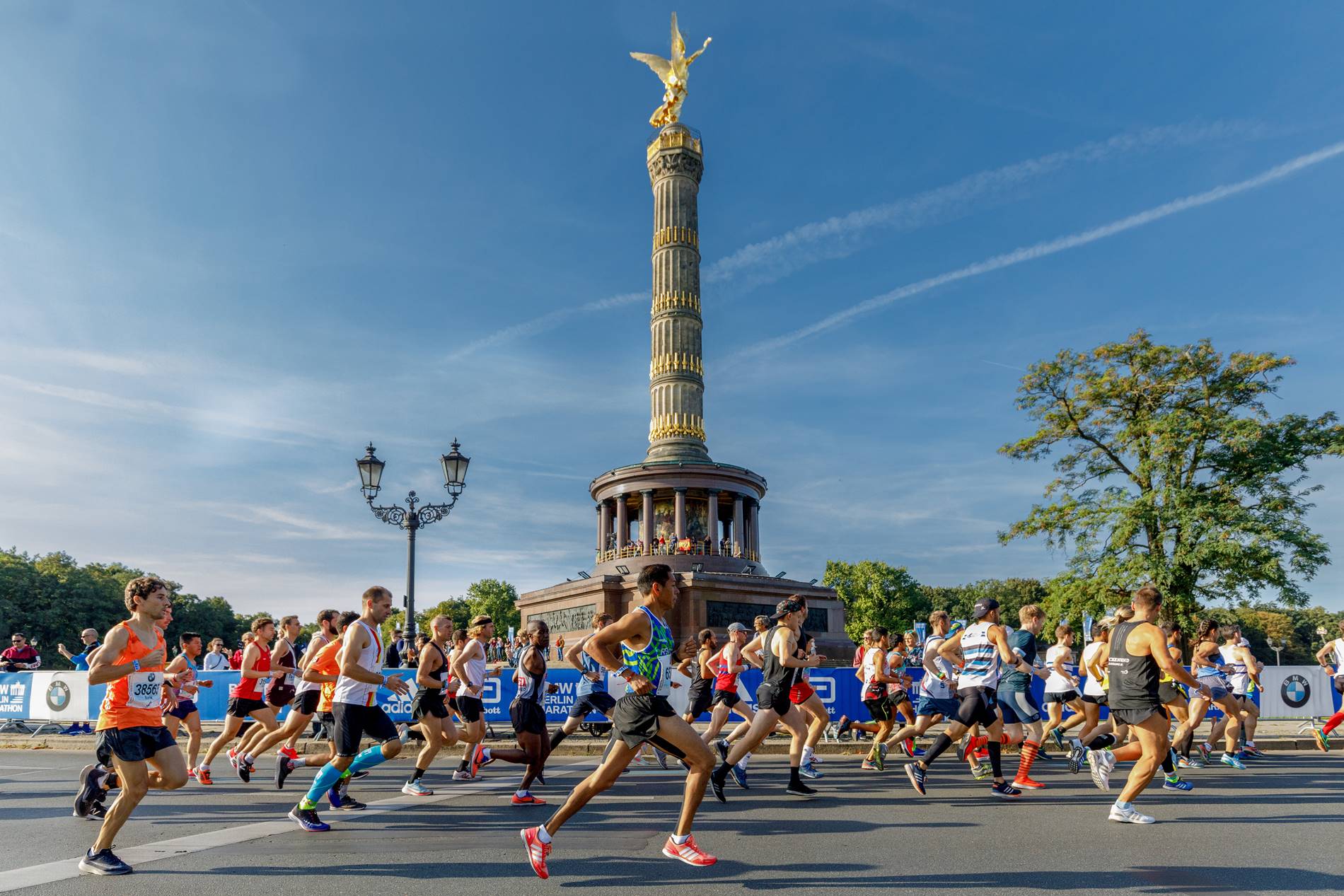

Featured
How To Get Into The Berlin Marathon
Modified: August 19, 2023
Looking for a featured guide on how to get into the Berlin Marathon? Learn the insider tips and tricks to secure your spot in this iconic race.
“
Introduction
The Berlin Marathon is one of the most prestigious and highly anticipated running events in the world. Every year, thousands of runners from around the globe gather in the vibrant city of Berlin to challenge themselves and participate in this iconic race. Whether you’re a seasoned marathon runner or someone looking to take on their first marathon, the Berlin Marathon offers a unique and unforgettable experience.
Known for its fast and flat course, the Berlin Marathon is a favorite among elite runners aiming to achieve personal bests and even break world records. The race takes participants through the historic streets of Berlin, passing by iconic landmarks such as the Brandenburg Gate and the Berlin Wall.
Participating in the Berlin Marathon requires proper preparation and planning to ensure a successful and enjoyable experience. From understanding the registration process to training effectively and setting realistic goals, there are several factors to consider. This article will guide you through the necessary steps to get into the Berlin Marathon and make the most out of this incredible event.
Whether you are a local resident or traveling from afar, the Berlin Marathon offers a unique opportunity to immerse yourself in the city’s vibrant culture and witness the support and enthusiasm of spectators lining the streets. With its well-organized logistics, world-class amenities, and exceptional atmosphere, the Berlin Marathon truly stands out as a must-do event for any avid runner or enthusiast.
So, if you’re ready to embark on an unforgettable journey of self-discovery and challenging your limits, let’s delve into the process of getting into the Berlin Marathon and all the aspects you need to consider along the way.
”
“
Preparing for the Berlin Marathon
Preparing for the Berlin Marathon requires careful planning and dedication. Whether you’re a seasoned athlete or new to the world of marathons, following a structured training program is crucial to ensure you’re physically and mentally ready for race day.
The first step in your preparation is to assess your current fitness level. This will help you determine how much time you need to dedicate to training and what areas you need to focus on improving. Ideally, you should have a solid base of running before starting marathon-specific training. If you’re new to running, it’s recommended to give yourself ample time to build up your endurance gradually.
Once you’ve established your starting point, it’s time to create a training plan. A well-designed plan will typically include a combination of long runs, speed workouts, tempo runs, and cross-training activities. It’s important to gradually increase your weekly mileage, allowing your body to adapt and avoid overuse injuries.
As part of your training, make sure to incorporate strength training exercises to build the necessary muscle strength and stability. Strengthening your core, glutes, and leg muscles will not only enhance your running performance but also help prevent injuries.
In addition to physical training, mental preparation is essential. Marathon training can be challenging, both physically and mentally. Develop mental strategies to stay focused and motivated during long training runs. Visualization exercises and positive self-talk can be incredibly powerful in overcoming difficult moments.
Furthermore, don’t forget to listen to your body during training. Rest and recovery are just as important as the training itself. Allow yourself at least one or two rest days each week to give your body time to heal and prevent burnout.
Lastly, as you approach the final weeks leading up to the marathon, consider participating in some shorter races or tune-up races to gauge your race-day readiness and practice racing strategies.
By following a well-rounded training plan, focusing on both physical and mental preparation, and allowing for proper rest and recovery, you’ll be well on your way to preparing for the Berlin Marathon and setting yourself up for a successful race day.
“
Understanding the Registration Process
The registration process for the Berlin Marathon is essential to understand to secure your spot in this highly sought-after event. With thousands of participants vying for limited slots, it’s crucial to be prepared and aware of the key details.
The registration for the Berlin Marathon typically opens several months in advance, with a specified registration window. It’s important to mark your calendar and be ready to sign up as soon as registration opens to increase your chances of securing a spot.
There are typically two main registration options for the Berlin Marathon: general registration and charity entry. General registration is open to all interested participants, while charity entry allows you to secure a spot by committing to raise a certain amount of funds for a designated charity partner.
It’s important to note that the Berlin Marathon uses a lottery system for general registration, as the demand exceeds the available spots. This means that even if you register within the specified window, you are not guaranteed a spot. The lottery results are typically announced a few weeks after the registration period ends.
If you are not successful in the lottery, there are still alternative options to participate in the Berlin Marathon. One option is to join a tour package offered by authorized travel agencies, which usually include a guaranteed entry along with accommodation and other amenities.
Another option is to participate as a charity runner. Many charity organizations offer guaranteed entries in exchange for fundraising efforts. This allows you to not only secure your spot in the race but also support a meaningful cause.
Once you have successfully secured your spot, you will receive a confirmation email or notification. Make sure to carefully review all the details provided, including race day logistics, bib pickup information, and any additional requirements.
It’s also important to stay updated with any communication from the Berlin Marathon organizers, as there may be specific instructions or changes leading up to the event.
Understanding the registration process and being proactive in securing your spot will ensure that you have the opportunity to participate in the Berlin Marathon and make memories that will last a lifetime.
Training for the Berlin Marathon
Training for the Berlin Marathon requires a structured and disciplined approach to ensure that you are prepared to conquer the 26.2-mile journey on race day. Whether you’re a seasoned marathoner or a beginner, a well-designed training plan is essential.
When crafting your training plan, it’s important to set realistic goals based on your current fitness level and experience. If you’re new to marathons, consider following a beginner-friendly training program that gradually increases your mileage over time. For experienced runners, aim to improve your previous marathon performance by incorporating more advanced workouts and targeting specific areas for improvement.
The cornerstone of marathon training is the long run. Gradually build up your endurance by adding one long run each week, increasing the distance incrementally. This helps to improve your aerobic capacity and mental stamina. Aim to complete at least one or two 20-mile runs during your training cycle to prepare your body for the full marathon distance.
In addition to the long runs, incorporating speed workouts and tempo runs into your training is crucial for improving your race pace. These workouts help build strength, endurance, and efficiency. Examples of speed workouts include intervals, fartlek runs, and hill repeats. Tempo runs involve running at a sustained, challenging pace for a specific distance or time period.
It’s also important to incorporate cross-training activities to complement your running. This can include activities such as cycling, swimming, or strength training. Cross-training helps to prevent overuse injuries, improve overall fitness, and provide variety to your training routine.
Another key aspect of marathon training is the importance of recovery. Allow time for rest and recovery, especially after the long runs and challenging workouts. Listen to your body and take rest days when needed to prevent burnout and reduce the risk of injury. Incorporating restorative practices such as stretching, foam rolling, and even massage therapy can also aid in recovery.
During your training, it’s crucial to practice proper nutrition and hydration. Fueling your body with a balanced diet rich in carbohydrates, proteins, and healthy fats will provide the energy and nutrients needed for long-distance running. Experiment with different fueling strategies, such as gels or energy bars, during your long runs to determine what works best for you. Stay hydrated throughout your training, aiming to consume enough water and electrolytes to replenish what is lost through sweat.
Finally, it’s important to stay motivated and accountable during your training. Find a training partner or join a running group to provide support and encouragement. Celebrate milestones, such as completing a long run or achieving a personal best in a workout. Remember to have fun and enjoy the journey towards the Berlin Marathon finish line.
By following a well-rounded training plan, focusing on endurance, speed, recovery, and nutrition, you’ll be well-equipped to take on the challenge of the Berlin Marathon and achieve your goals on race day.
Setting Realistic Goals
Setting realistic goals is a crucial aspect of preparing for the Berlin Marathon. Goals provide focus, motivation, and a sense of purpose throughout your training journey. However, it’s important to set goals that align with your current fitness level, experience, and the specific challenges of the Berlin Marathon.
When setting your goals, it’s vital to be realistic and consider various factors such as your previous marathon performance, current fitness level, and the timeframe available for training. Setting unrealistic goals that are beyond your capabilities can lead to disappointment and potential burnout.
One effective method for setting realistic goals is utilizing the SMART framework: Specific, Measurable, Achievable, Relevant, and Time-bound. Specific goals are clear and well-defined. For example, instead of saying, “I want to finish the Berlin Marathon,” a specific goal could be, “I want to finish the Berlin Marathon in under 4 hours.”
Measurable goals allow you to track your progress and measure your success. By setting specific time or distance targets, you can monitor your improvements and adjust your training as needed.
Achievable goals are within your reach considering your current fitness level and experience. While it’s important to challenge yourself, setting a goal that is too ambitious can be discouraging. Aim for goals that push you outside your comfort zone but are still attainable with dedicated training.
Relevant goals align with your overall aspirations and motivations. Reflect on your reasons for participating in the Berlin Marathon and set goals that are meaningful to you. This will help you stay focused and committed throughout your training.
Time-bound goals have a clear deadline. The Berlin Marathon itself serves as a natural deadline, but you can also set intermediate goals for specific training milestones or tune-up races leading up to the main event. This provides a sense of structure and urgency to your training plan.
It’s also important to set multiple goals. Having a mix of outcome goals (such as achieving a specific finish time) and process goals (such as consistently completing all of your training runs) can provide a well-rounded approach to your training and allow for different measures of success.
Keep in mind that goals can evolve throughout your training journey. As you progress and gain more experience, you may find that your initial goals need adjustment. Listen to your body, assess your progress, and be willing to modify your goals if necessary.
Setting realistic and meaningful goals will help guide your training, keep you motivated, and give you a sense of purpose as you prepare for the Berlin Marathon. Remember to celebrate both small and significant milestones along the way, and most importantly, enjoy the process and embrace the incredible experience of running the Berlin Marathon.
Nutrition and Hydration Tips for the Marathon
Nutrition and hydration play a vital role in ensuring optimal performance and endurance during the Berlin Marathon. Proper fueling and hydration strategies can help prevent fatigue, muscle cramps, and other potential issues that can arise during the race. Here are some key tips to keep in mind:
1. Carbohydrate Loading: In the days leading up to the marathon, focus on consuming a high-carbohydrate diet. This will help maximize glycogen stores in your muscles, providing a readily available source of energy during the race. Include foods such as whole grains, fruits, vegetables, and legumes in your meals to ensure an adequate carbohydrate intake.
2. Race-Day Breakfast: Eat a well-balanced breakfast on the morning of the marathon, ideally 2-3 hours before the start. Aim for a meal that is rich in carbohydrates, moderate in protein, and low in fat and fiber to facilitate easier digestion. Examples include oatmeal with bananas, toast with nut butter, and a small portion of yogurt.
3. In-Race Fueling: During the marathon, it’s important to fuel your body with readily digestible carbohydrates to maintain energy levels. Experiment with different energy gels, chews, or sports drinks during your long training runs to find what works best for you. Aim to consume around 30-60 grams of carbohydrates per hour to sustain energy levels throughout the race.
4. Hydration: Proper hydration is crucial to prevent dehydration and maintain optimal performance. Begin hydrating well in advance of the race and continue to sip fluids throughout. Aim to consume about 5-10 ounces of water or sports drink every 15-20 minutes during the marathon. Monitor your urine color as a general indicator of hydration status – it should be a pale yellow color.
5. Electrolyte Balance: Along with staying hydrated, it’s important to replenish electrolytes lost through sweat. Choose a sports drink that provides sodium, potassium, and other electrolytes to maintain the balance. This will help prevent muscle cramping and maintain proper muscle function.
6. Practice During Training: Use your long training runs as an opportunity to practice your nutrition and hydration strategies. Train with the same hydration products and energy sources you plan to use during the marathon. This will help you gauge how your body responds and allows you to make any necessary adjustments before race day.
7. Post-Race Recovery: After completing the marathon, prioritize post-race nutrition to aid in recovery. Aim to consume a combination of protein and carbohydrates within 30 minutes of finishing the race to replenish glycogen stores and promote muscle repair. Good options include a protein shake, chocolate milk, or a balanced meal including lean protein and carbohydrates.
Remember, everyone’s nutrition and hydration needs may vary, so it’s essential to personalize your strategy and listen to your body. Experiment with different options during your training to find what works best for you. A well-executed nutrition and hydration plan will contribute to your overall performance and help you achieve your goals at the Berlin Marathon.
Tips for a Successful Race Day
Race day at the Berlin Marathon is an exciting and memorable experience. To ensure a successful race day and make the most of your marathon journey, it’s important to be prepared and execute your plan effectively. Here are some valuable tips to help you have a successful race day:
1. Stick to Your Routine: On race day, aim to follow the routine and practices that have worked for you during your training. Stick to your pre-race meal, warm-up routine, and any pre-race rituals that have helped you feel confident and prepared.
2. Arrive Early: Plan to arrive at the start line with ample time to spare. This allows you to navigate any logistical challenges, use the restroom, warm up, and mentally prepare for the race. Avoid unnecessary stress by giving yourself enough time to settle into the race environment.
3. Dress Appropriately: Research the expected weather conditions for race day and dress accordingly. Dress in layers that can be easily removed if you get too warm. Avoid wearing new or unfamiliar clothing to prevent discomfort or chafing during the race.
4. Start Slow: It’s common for runners to feel energized and excited at the start of the race, which can lead to starting too fast. Pace yourself and start slower than your target race pace. This will help conserve energy for the later stages of the marathon and prevent burnout early on.
5. Hydration and Fueling: Stick to your hydration and fueling plan that you practiced during training. Set reminders to sip fluids and consume energy gels or snacks at regular intervals to maintain energy levels throughout the race. Take advantage of the water and aid stations along the course.
6. Stay Mentally Focused: Maintain a positive mindset and stay mentally focused during the race. Find mantras or visualizations that help you stay motivated and overcome any challenging moments. Break the race into smaller, manageable segments and focus on reaching the next milestone.
7. Take Advantage of Crowd Support: The Berlin Marathon is known for its incredible crowd support. Feed off the energy of the spectators and draw inspiration from their enthusiasm. High-five spectators, smile, and soak in the atmosphere as you make your way through the course.
8. Pace Yourself: Be mindful of your pacing throughout the race. Avoid the temptation to push too hard early on. Instead, aim for a consistent pace that allows you to maintain your energy levels and finish strong. Save that extra burst of energy for the final stretch.
9. Stay Flexible: Be prepared to adjust your race strategy if unexpected circumstances arise. Weather changes, muscle fatigue, or other unforeseen challenges may require you to adapt your goals or approach. Stay flexible and make decisions that prioritize your safety and well-being.
10. Enjoy the Finish Line: As you approach the finish line, savor the moment and enjoy the culmination of your hard work. Smile, raise your hands in celebration, and relish in the sense of accomplishment as you cross the finish line at the Berlin Marathon.
By following these tips, you’ll be well-equipped to have a successful race day at the Berlin Marathon. Stay confident, trust your training, and savor every step of the incredible marathon journey.
Recovering after the Berlin Marathon
Recovery after completing the Berlin Marathon is just as important as the preparation and execution of the race itself. Proper recovery allows your body to heal, replenish energy stores, and adapt to the physical stress of the marathon. Here are some essential tips for a healthy and effective post-race recovery:
1. Celebrate and Reflect: Take a moment to celebrate your accomplishment and reflect on your marathon journey. Whether you achieved a personal best or simply crossed the finish line, be proud of your achievement and give yourself the recognition you deserve.
2. Rest and Rehydrate: After the race, prioritize rest and give your body time to recover. Hydrate well by consuming fluids and electrolytes to replenish what was lost during the marathon. Aim to drink water or sports drinks regularly in the hours following the race.
3. Gentle Movement: Engage in gentle movement such as walking or light stretching to promote blood flow and prevent muscle tightness. Avoid any high-impact activities or intense workouts in the immediate days following the race.
4. Massage and Foam Rolling: Consider scheduling a post-race massage or using a foam roller to help release tension in your muscles and aid in recovery. This can help alleviate soreness and promote faster healing.
5. Proper Nutrition: Focus on consuming a balanced diet following the marathon to support your body’s recovery process. Include protein-rich foods to aid in muscle repair and carbohydrates to replenish glycogen stores. Incorporate plenty of fruits, vegetables, and whole grains for essential nutrients and antioxidants.
6. Sleep and Rest: Allow yourself plenty of sleep in the days following the marathon. Quality sleep is crucial for cellular repair, hormone regulation, and overall recovery. Make sure to prioritize rest and listen to your body’s need for sleep.
7. Gradual Return to Training: While it’s important to rest and recover, you can gradually reintroduce light exercise after a few days of rest. Start with low-impact activities like swimming, cycling, or gentle jogging. Listen to your body and increase intensity and distance gradually.
8. Reflect and Evaluate: Use the post-race recovery period as an opportunity to reflect on your race performance, identify areas for improvement, and set new goals for future races. Take note of what worked well and what you might do differently in your next training cycle.
9. Embrace Active Recovery: Engage in activities such as yoga, Pilates, or mobility exercises to improve flexibility, strength, and range of motion. These activities can help maintain fitness and promote overall well-being during the recovery phase.
10. Seek Professional Help: If you experience any prolonged or severe pain or have concerns about your recovery, consult with a healthcare professional such as a physiotherapist or sports medicine specialist. They can provide guidance and treatment specific to your needs.
Remember, recovery is a crucial part of the marathon process. Allow yourself time to rest, replenish, and heal. Embrace the post-race recovery period as an opportunity to celebrate your achievements, take care of your body, and set the foundation for future running success.
